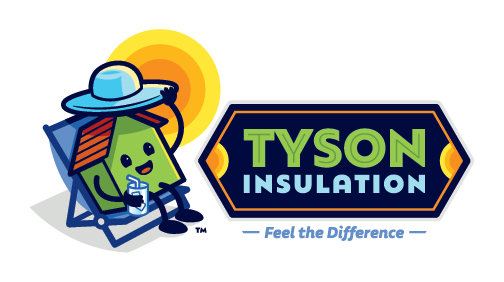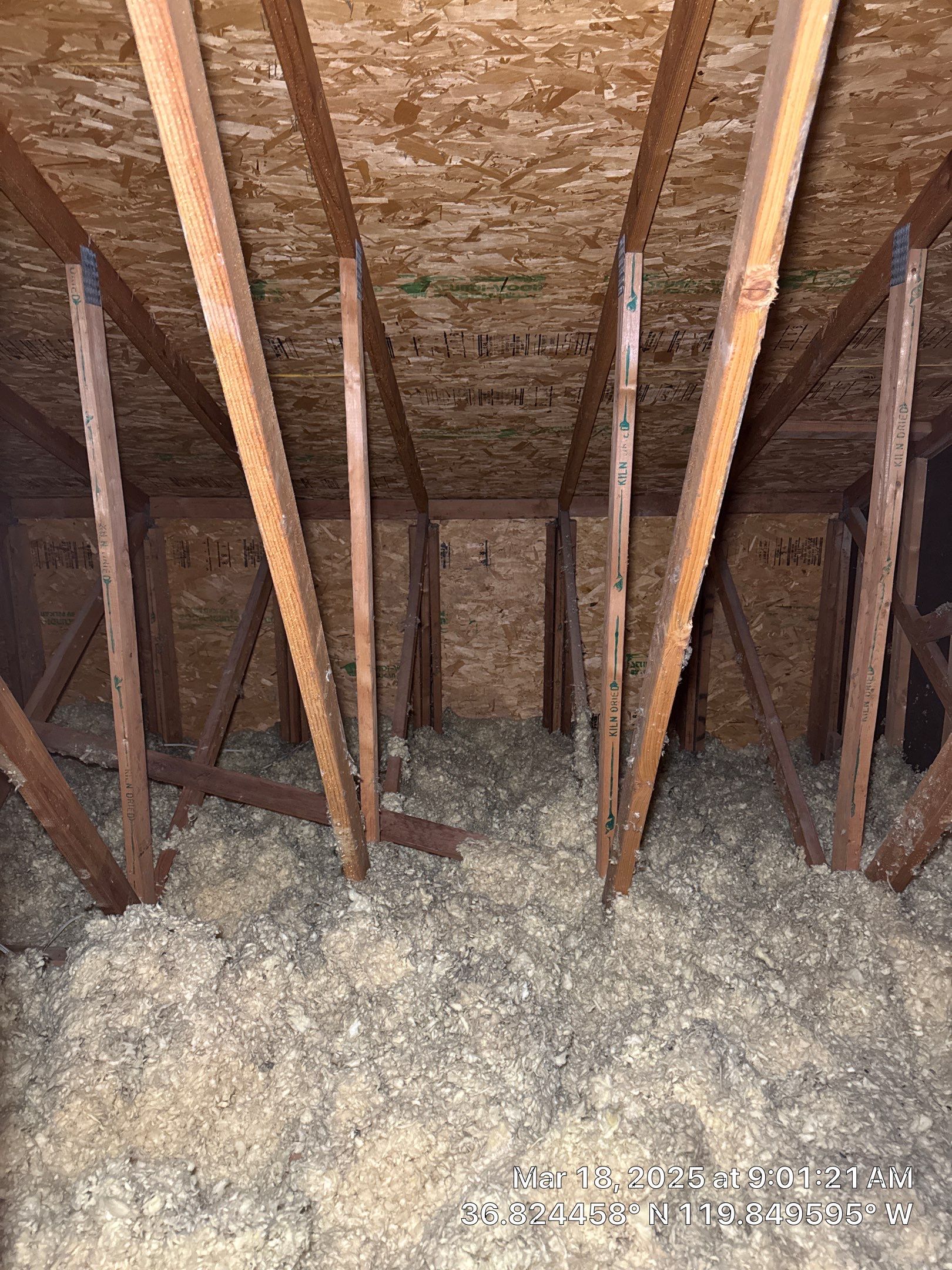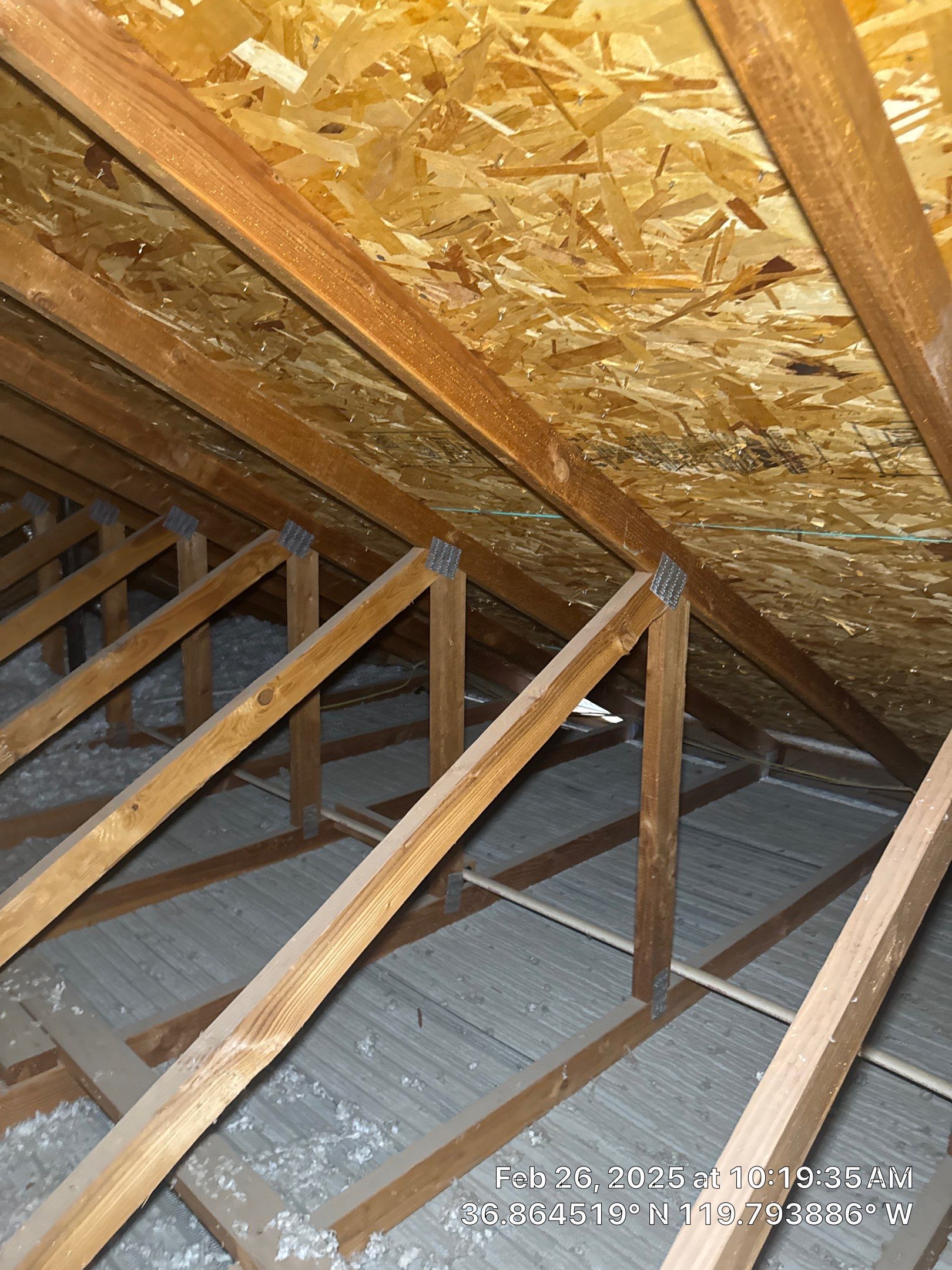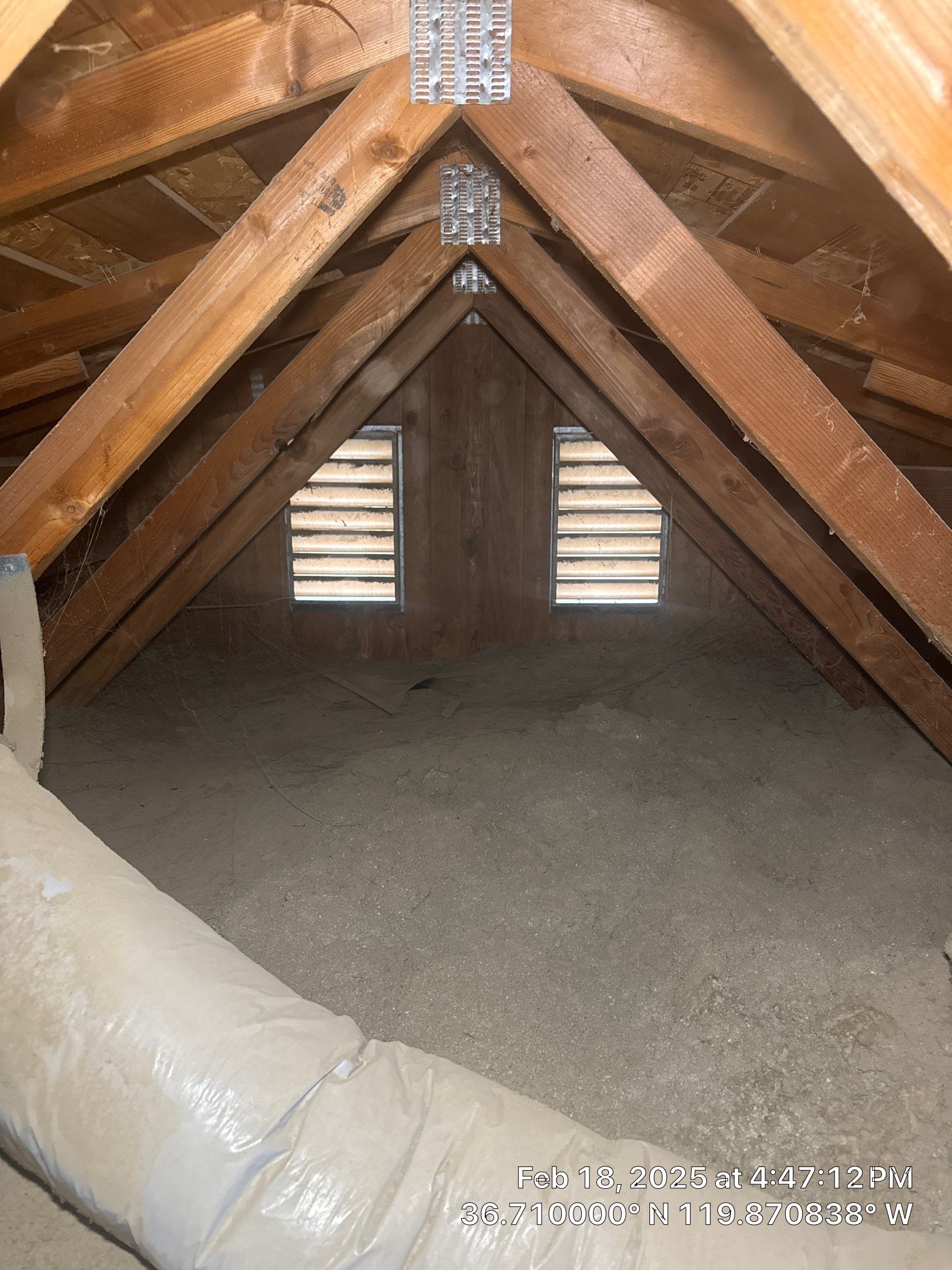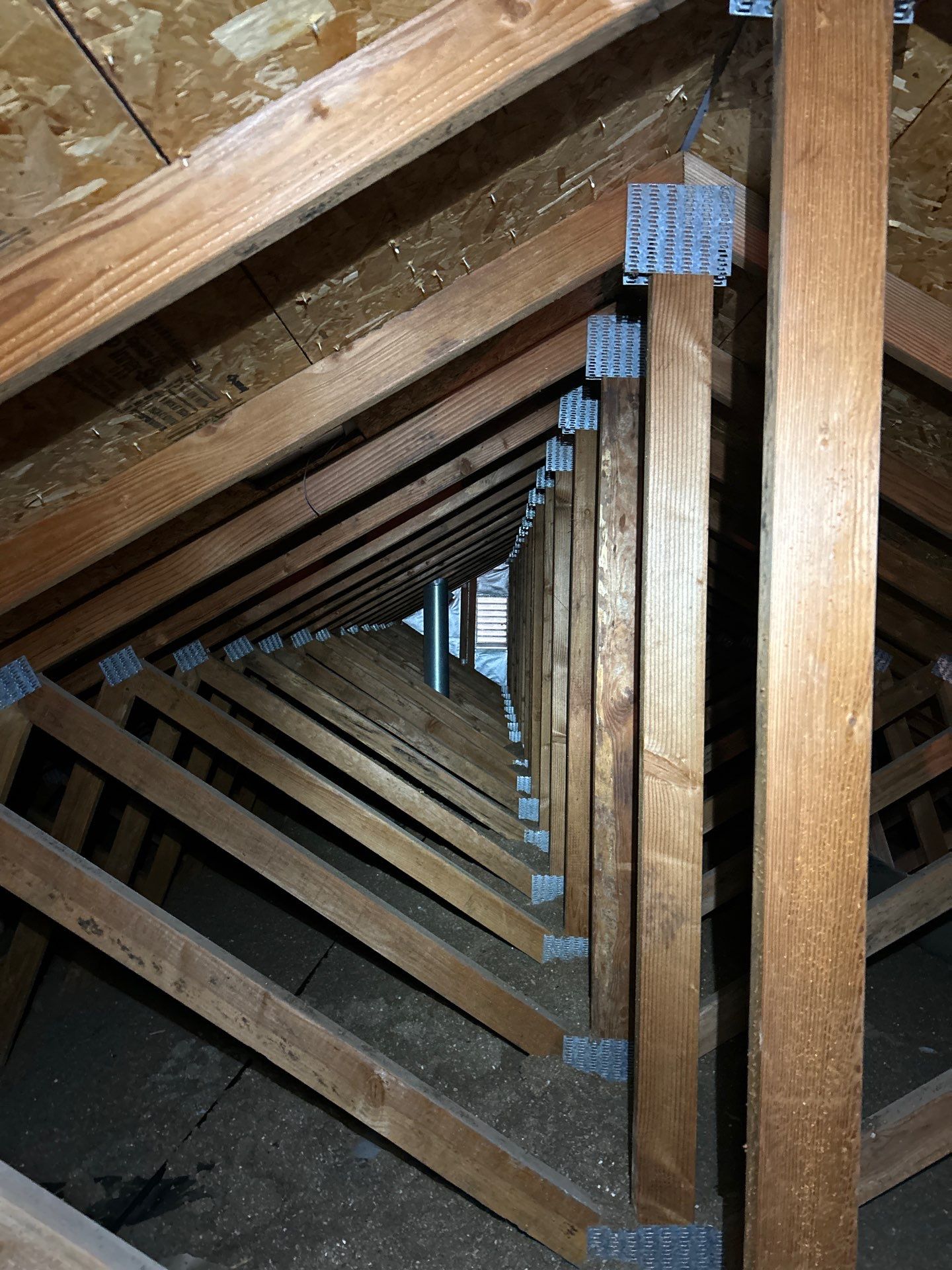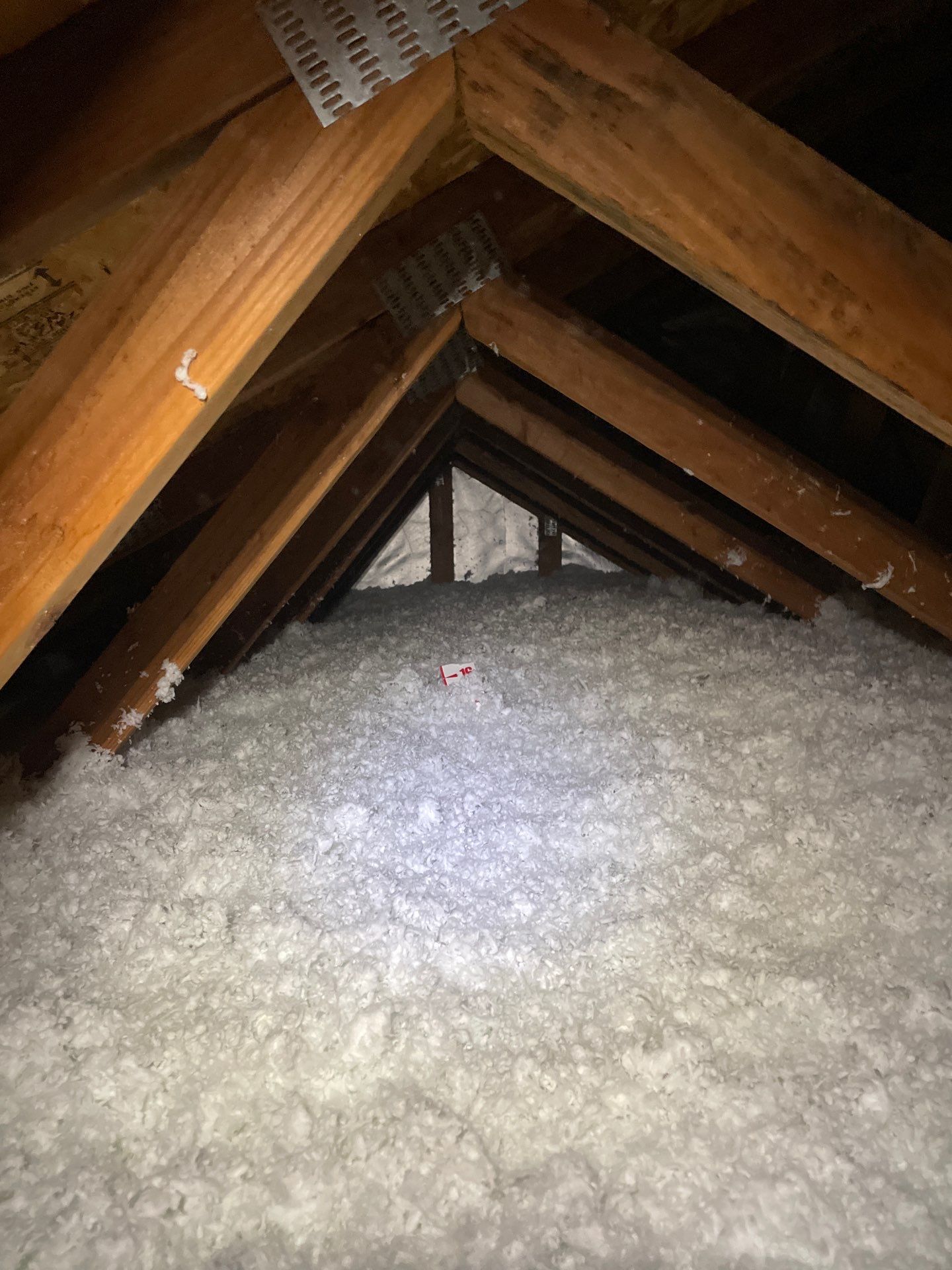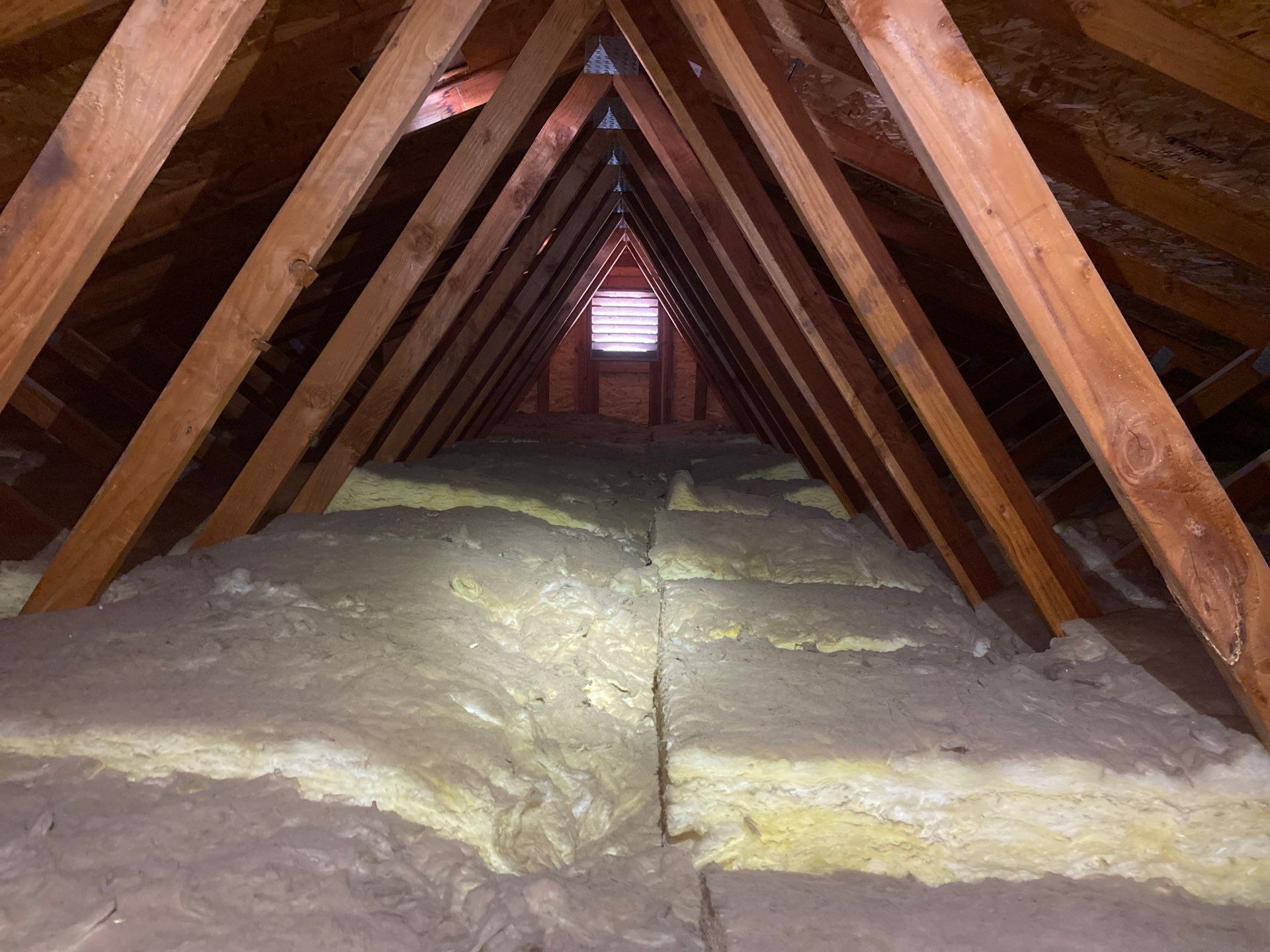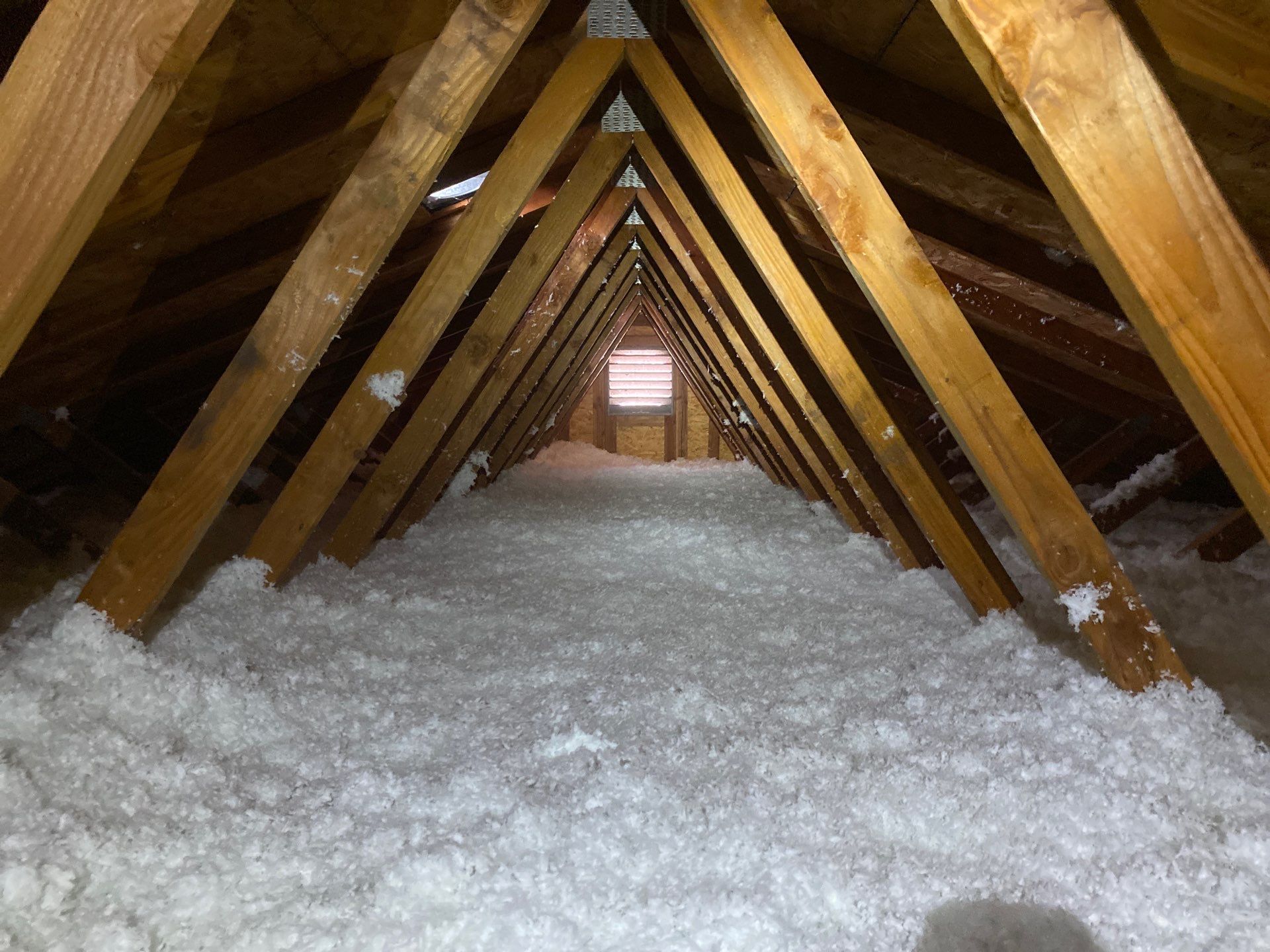Tyson Insulation Before & After Photos
Click on a photo to enlarge.
Donna reached out to us from Fresno because her home was struggling to stay cool, even with the AC running nonstop. She suspected her attic might be part of the problem, so we scheduled a full inspection. Once we got up there, it didn’t take long to find the issue — the attic had just 6 inches of old fiberglass insulation, far below the recommended level. On top of that, we noticed signs of air leakage and debris, which can significantly impact comfort and energy efficiency.
To fully restore Donna’s attic, we first removed all of the existing insulation and cleaned the space thoroughly. We then sanitized the entire attic using Nisus DSV, a powerful disinfectant that eliminates bacteria, mold, and viruses, helping to improve indoor air quality. After sanitizing, we air-sealed every potential leakage point — including wire and plumbing penetrations, top plates, and around duct registers — using closed-cell foam. This air-sealing step is essential to prevent conditioned air from escaping into the attic and to block outside contaminants from entering the home.
We also inspected for rodent entry points and sealed those areas to keep pests out for good. Once the attic was fully prepped, we installed 14 inches of premium blown-in fiberglass insulation, bringing the attic up to the recommended R38 level.
Thanks to this comprehensive attic restoration, Donna can now look forward to a home that stays cooler in the summer, warmer in the winter, and has noticeably better indoor air quality. She’ll also see up to 50% off on her heating and cooling bills for years to come.
Linda reached out to us from Fresno because her home wasn’t staying cool, no matter how long she ran her AC. Her energy bills were climbing, and the house still felt stuffy and uncomfortable throughout the day. We headed out to inspect her attic and quickly found the issue: her attic insulation was severely lacking. Some parts of the attic were completely bare with zero insulation, while other areas had only about five inches — far below the recommended level for our Central Valley climate.
We recommended a full insulation upgrade to R38, the Energy Star recommended level for our region. Our team carefully prepped the attic and used blown-in premium fiberglass insulation to ensure even coverage across the entire space. This high-performance insulation helps trap conditioned air inside the home while keeping hot attic air out — making a big difference in both comfort and energy efficiency.
Now that Linda’s attic is properly insulated, she’ll enjoy a cooler home in the summer, better air retention in the winter, and significantly lower HVAC usage year-round. It’s a lasting upgrade that will pay off in comfort and cost savings for years to come.
David from Fresno gave us a call because his home was struggling to stay comfortable—especially during those scorching Central Valley summers. His HVAC system was working overtime, but the house still felt stuffy and inconsistent in temperature. We headed out to take a look and quickly discovered the issue: his attic had only about 5 inches of old cellulose insulation, which is well below modern standards and nowhere near sufficient for our climate.
Given the condition of the insulation and the presence of debris and dust, we recommended a full attic restoration to ensure long-term comfort and energy savings. We began by vacuuming out all of the existing cellulose insulation and debris. Once the attic was cleared, we sanitized the entire space using Nisus DSV, a professional-grade disinfectant that kills bacteria, viruses, and mold—greatly improving the indoor air quality for the entire home.
We also inspected the attic for signs of rodent entry and sealed off those access points to help keep unwanted pests from returning. Additionally, we cleared the soffit vents to allow for better airflow throughout the attic, which helps maintain a balanced temperature and prevents moisture buildup.
With the attic fully cleaned, sanitized, and vented, we finished by installing a fresh layer of blown-in fiberglass insulation to a depth of 14 inches, reaching the recommended R38 level. This upgrade will make a major difference in David’s home—cutting down on energy bills and keeping the living space far more comfortable all year long.
Darren from Fresno reached out to us because her home was constantly too warm, and her energy bills had been climbing. He suspected his attic might be part of the problem—and he was absolutely right. When we inspected the attic, we found only 4 inches of old, dusty cellulose insulation. Not only was it far below the recommended level, but it was also dirty and compacted, which drastically reduced its effectiveness.
Given the condition of the attic, we recommended a full attic restoration to fix the problem from the ground up. We began by safely removing all of the existing cellulose insulation. Once the old material was extracted, we thoroughly cleaned the attic and applied a hospital-grade disinfectant and sanitizer—Nisus DSV—to eliminate any lingering bacteria, mold spores, and allergens that might have been trapped in the insulation.
Next, we located and blocked potential rodent entry points to help keep pests out for good. We also made sure the attic space had proper ventilation by clearing soffit vents, allowing fresh air to flow and preventing future moisture buildup.
With the attic now clean, sanitized, and secure, we finished the restoration by blowing in new, high-performance fiberglass insulation to a depth of 14 inches—bringing it up to an R38 level. This upgrade dramatically increases the home’s energy efficiency and will help Darren enjoy a more stable indoor temperature year-round.
Thanks to this complete attic restoration, Darren can now look forward to lower energy bills, cleaner air in his home, and consistent comfort across all seasons.
Derrick from Visalia contacted us because his home wasn’t staying comfortable no matter the season. Whether it was summer heat or winter chill, his HVAC system seemed to run constantly, yet the temperature inside still fluctuated. After inspecting his attic, we found the root of the issue—only R19 batt insulation was in place, which is far below recommended levels for Central California homes.
To resolve this, we upgraded Derrick’s attic insulation to R38 using premium blown-in fiberglass. This level of insulation is the current Energy Star recommendation for optimal energy performance and indoor comfort. R38 insulation creates a thick, effective thermal barrier that helps keep conditioned air inside the home and outdoor temperatures out.
By adding fresh blown-in fiberglass to bring the attic to R38, Derrick can now expect a noticeable improvement in indoor comfort and a significant reduction in energy usage. His home will stay cooler in the summer, warmer in the winter, and his HVAC system won’t have to work nearly as hard to keep up.
